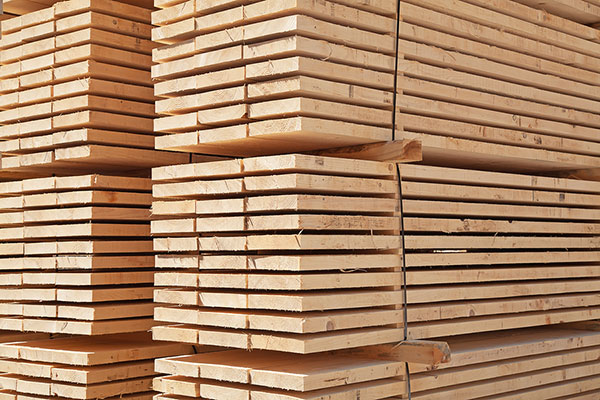
Mena sees biggest lumber imports fall in 2016
DUBAI, June 18, 2017
The biggest declines in lumber imports globally from 2015 to 2016 were seen in the Middle East and North Africa (Mena) region, where demand fell in all the major markets, including Egypt, Algeria, Saudi Arabia and Morocco, a report said.
Global softwood lumber prices trended upward in early 2017 with prices in North America hitting a 13-year high, Chinese import prices increasing 13 per cent in 18 months and Japanese prices moving modestly higher in the first quarter of 2017, added the Wood Resource Quarterly (WRI).
Globally traded softwood lumber reached an all-time high in 2016, said Wood Resources International in its quarterly report.
WRI estimates that 118 million cu m of lumber was traded last year, or 10 per cent more than in 2015. Imports to the US account for about one-third of globally traded lumber and have almost doubled in five years. China accounted for about 17 per cent of import volumes in 2016, followed by the UK, Japan and Germany.
Lumber markets – North America
Lumber production in North America in 2016 was up six per cent from the previous year, reaching its highest level since 2007. The biggest rises in production occurred in the US South and Eastern Canada, while the increases in western Canada and the western US were more modest.
Prices for lumber in the US have jumped during the first four months of the year to hit a 13-year high in April. Many of the commonly traded grades surged in price by more than 20 per cent from April of 2016.
Lumber markets – Northern Europe
Sweden exported 12.9 million cu m of softwood lumber in 2016, which was the highest volume exported since 2006. The increase from 2015 was a modest 1.5 per cent, with shipments to Denmark, Japan, China and France rising the most.
Domestic lumber prices in both Finland and Sweden continue to be close to their lowest levels in 10 years in US dollar terms, as reported in the Wood Resource Quarterly.
Lumber markets – China
Prices for imported softwood lumber to China have been in a steady upward trend during 2016 and 2017 with the average import price in March 2017 being 13 per cent higher than 18 months earlier. The biggest change in pricing over the past two year has been that prices for Russian lumber are no longer substantially cheaper than those for lumber from other supplying regions, but instead are rather close to the average import price.
Lumber market – Japan
Total housing starts were up 3.2 per cent in Japan in the 1Q/17 as compared to the same quarter in 2016, and the economic outlook for the coming year is slightly more optimistic than that for last year.
Prices for domestic and imported lumber have remained practically unchanged for almost a year in yen terms. With the yen strengthening against the US dollar during the first four months of 2017, lumber prices have increased so far this year in US dollar terms.
Lumber market – Russia
After a substantial decline in softwood lumber export prices during 2014 and 2015, Russian lumber prices have trended upward for most of 2016 and early 2017. Average export prices in March 2017 were 12 per cent higher than in the same month last year, and prices for wood going to China have gone up even faster over the same time-period.
Export volumes to China in the 1Q/17 were unchanged from the previous quarter, holding steady at the second highest level on record.
Global lumber, sawlog and pulpwood market reporting is included in the 52-page quarterly publication Wood Resource Quarterly (WRQ). The report, which was established in 1988 and has subscribers in over 30 countries, tracks sawlog, pulpwood, wood chip, lumber and pellet prices, trade and market developments in most key regions around the world. – TradeArabia News Service







